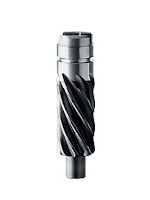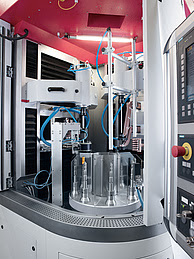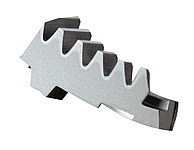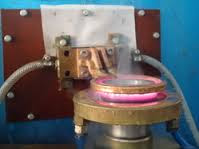Two
methods have become established for Induction
hardening work pieces in mass production: case hardening and
induction hardening. A comparison of these two methods shows their differences
and the advantages of each.
Case
Hardening vs. Induction Hardening – a Comparison
If
one compares the two methods for hardening steel work pieces (for a general
explanation of hardening see here: Hardening), then the first striking
difference is the parts handling. While case hardening processes a large number
of work pieces at the same time, induction hardening focuses on the individual
work piece. With induction hardening, components are hardened work piece by
work piece. For case hardening, “batch by batch” would be a better description.
Of
courses, this has an impact on the manufacturing. While case hardening relies
on parts logistics to carry parts between the production line and hardening,
induction hardening can be integrated directly in the production line with a
suitable hardening machine (e.g. MIND series) and be part of the cycle.
Case hardening in detail
As
mentioned above, case hardening is done in batches. As with induction
hardening, the goal is to harden the outer layer of work pieces.
In case hardening the work pieces are hardened by carburization. The steel is
heated to over 880 °C to become austenitic. Then coal is transferred into the
part from a CO-emitting medium through the part’s surface. The diffusion causes
the edge of the work piece to receive more carbon, while the carbon density
remains the same toward the center.
Hardening
occurs after the application of carbon. Penetration of carbon is critical for
the hardness and the depth hardness characteristic of the work piece. The
hardening, i.e. the hardness and the hardening depth, is defined by the
carbonization depth, the receptiveness and thus the harden ability of the
steel, and the quenching. The more carbon is inside an area of the work piece,
the more successful the hardening in that area.
After
hardening, the work pieces are annealed (for more information about annealing
please see here: Annealing) to restore some of their plasticity. The goal
of any hardening process is to make the edge resistant to mechanical loads
while giving the part enough elasticity to deflect external forces without
damage.
There
are two ways to influence the hardening depth in case hardening: One is to
manipulate the heating of the work piece, e.g. by application of special pastes
that prevent heating in certain places. The other is by influencing the
quenching process, e.g. by immersing only certain parts of the work piece.
 With
both methods, results are not particularly accurate and reproducible only
within a relatively wide tolerance range. This is very different for Air Coolers and Oil Coolers in Faridabad.
With
both methods, results are not particularly accurate and reproducible only
within a relatively wide tolerance range. This is very different for Air Coolers and Oil Coolers in Faridabad.
Induction hardening in detail
As
mentioned above, each part is hardened separately with the induction hardening
technology. Each part is heat treated, quenched, and annealed (if necessary)
separately.
In
addition to integration in the production line, the great advantages of
induction hardening are precise control and reproducibility of hardening
results.
To
achieve this, the entire hardening process from the inductor and the applied
energy and frequency to quenching and annealing is specially adapted to the
relevant work piece. This yields excellent hardening results, even for work pieces
with complex geometriesen
ing
Which hardening method is the right one?
Which
Induction hardening in Faridabad
process is suitable for an application depends on several factors. Both
methods, case hardening and induction hardening, have advantages and downsides.
For
the mass production of components in medium or large quantities however,
induction hardening offers a range of benefits:
- With a suitable hardening machine, induction hardening can be fully integrated in the cycle of the production line and automated.
- Especially with induction hardening, results are reproducible, which contributes to a consistently high quality in production.
- This reduces unit costs considerably






















